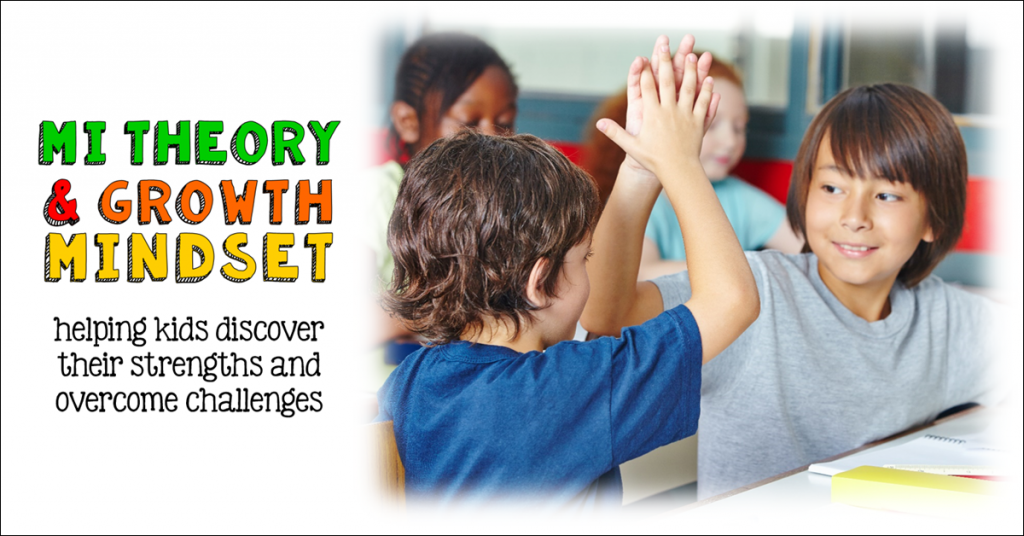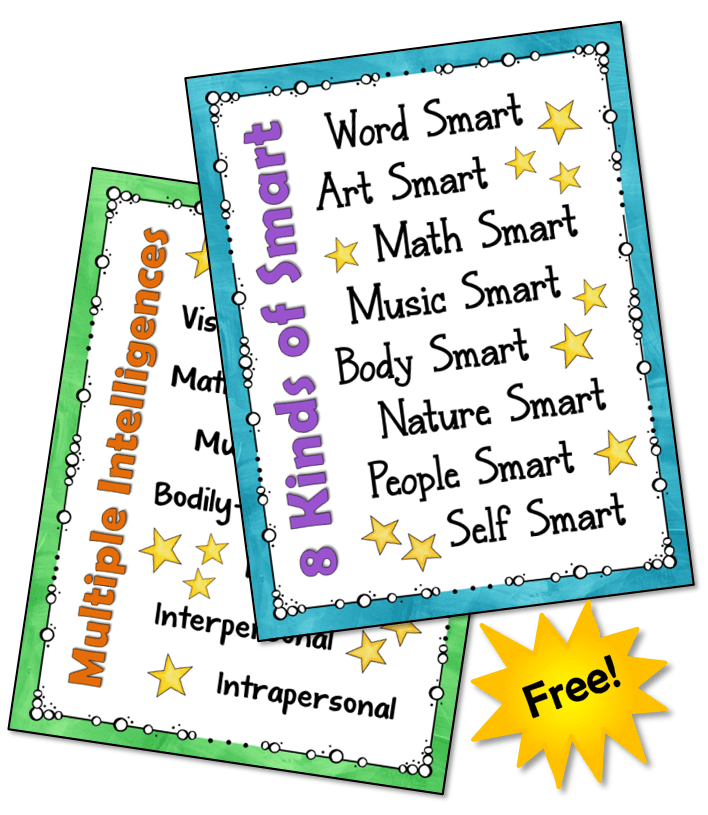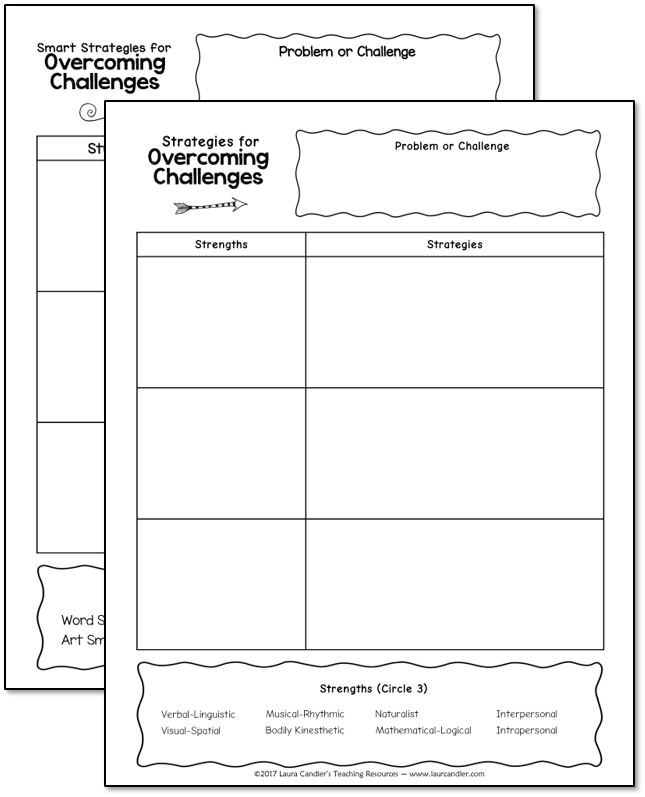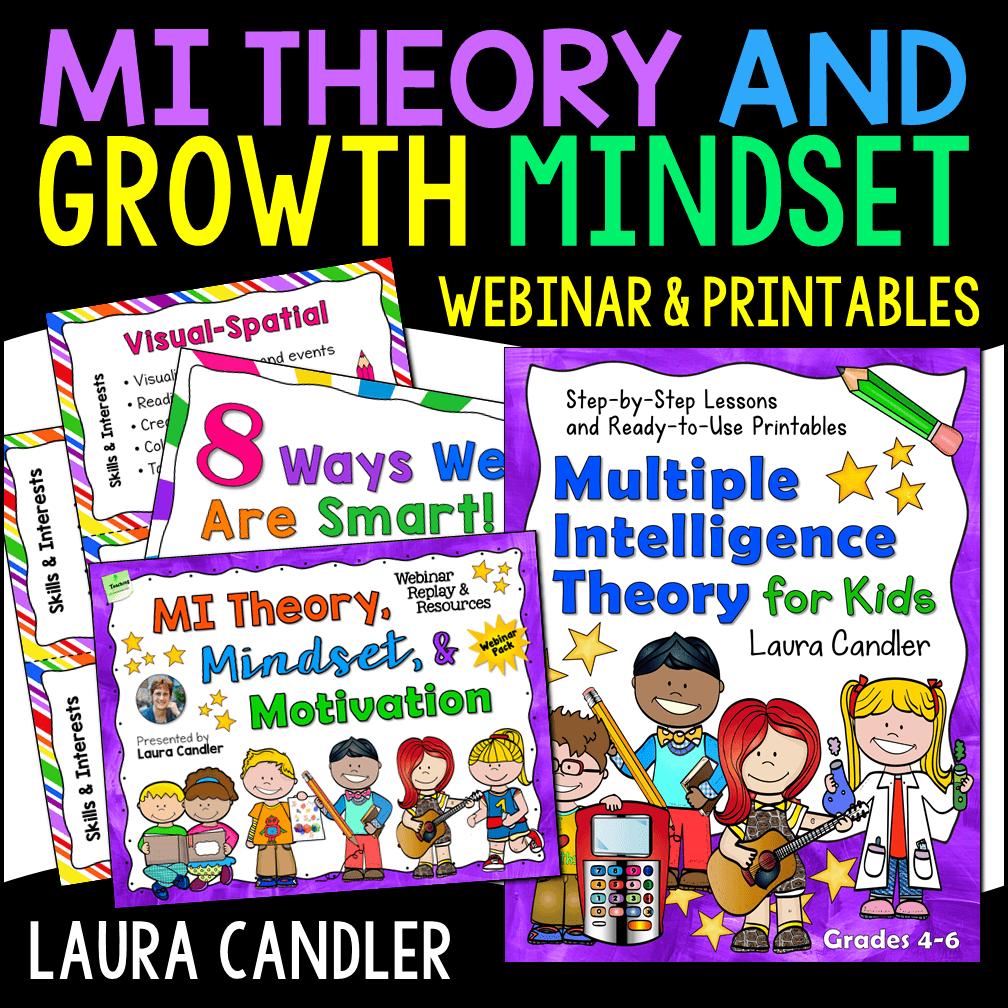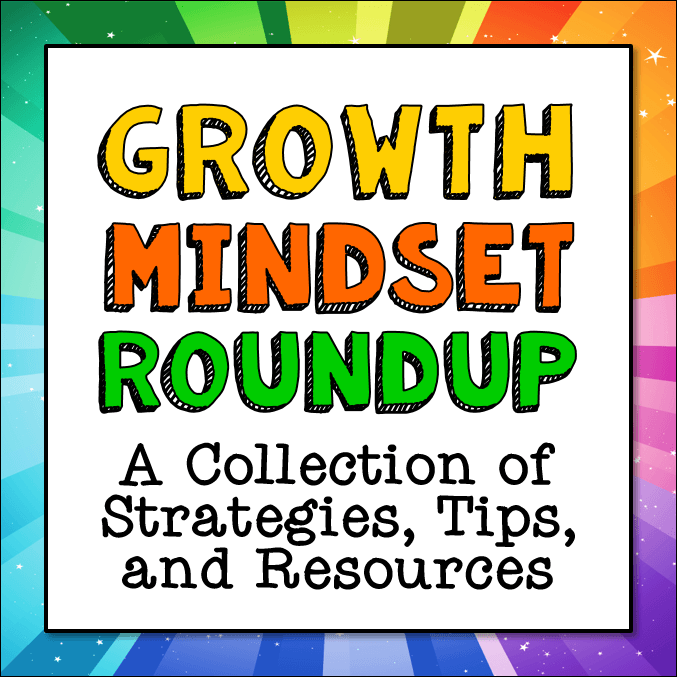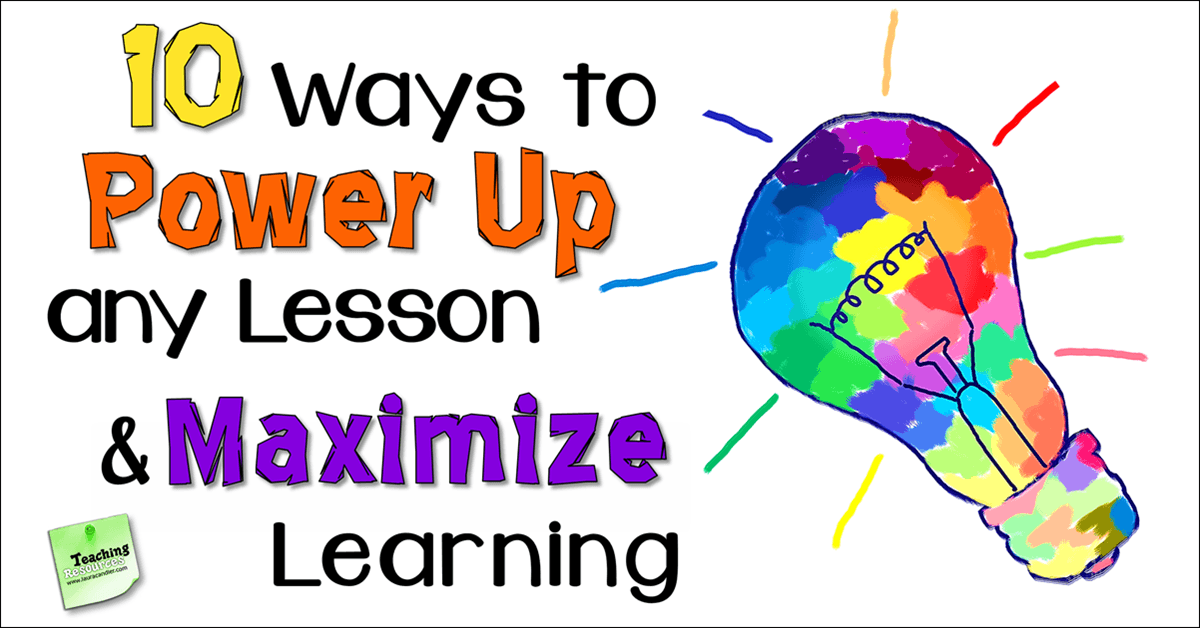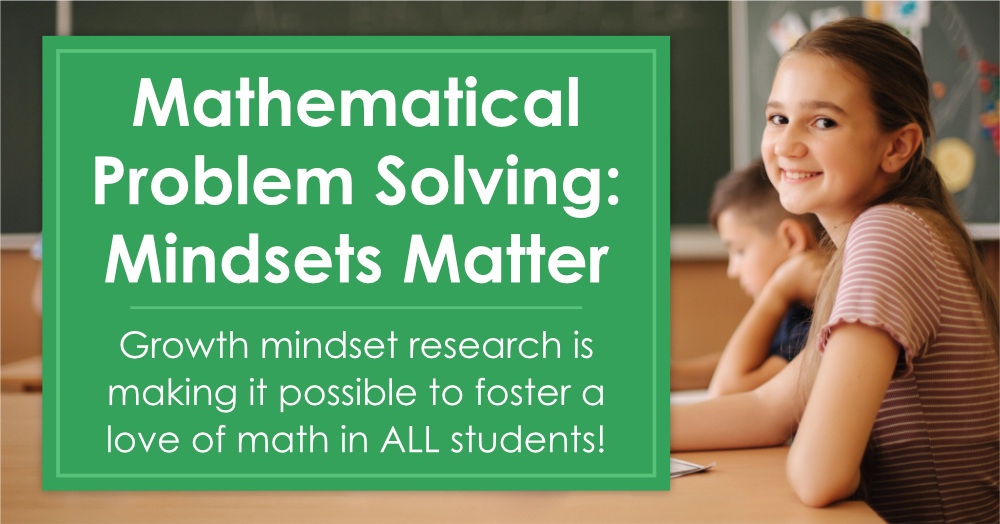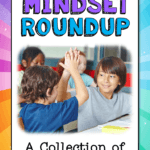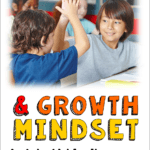Multiple Intelligence Theory and the research on Growth Mindset offer us insight into how the brain works, what it means to be intelligent, and how we respond to the challenges of life. Both frameworks have important implications for teaching and learning, and they’re even more powerful when implemented together. In this post, I’ll explain why I think it’s important to teach students about multiple intelligence theory and growth mindset, and I’ll wrap up by sharing a step-by-step process for teaching your students how to discover their own unique strengths and use them to develop strategies for overcoming challenges. I used three MI theory and growth mindset resources in that lesson, and you can get all three of those resources for free when you subscribe to my email list. Just follow the link in the welcome message to the subscriber freebies page, and look for the MI Theory resources.
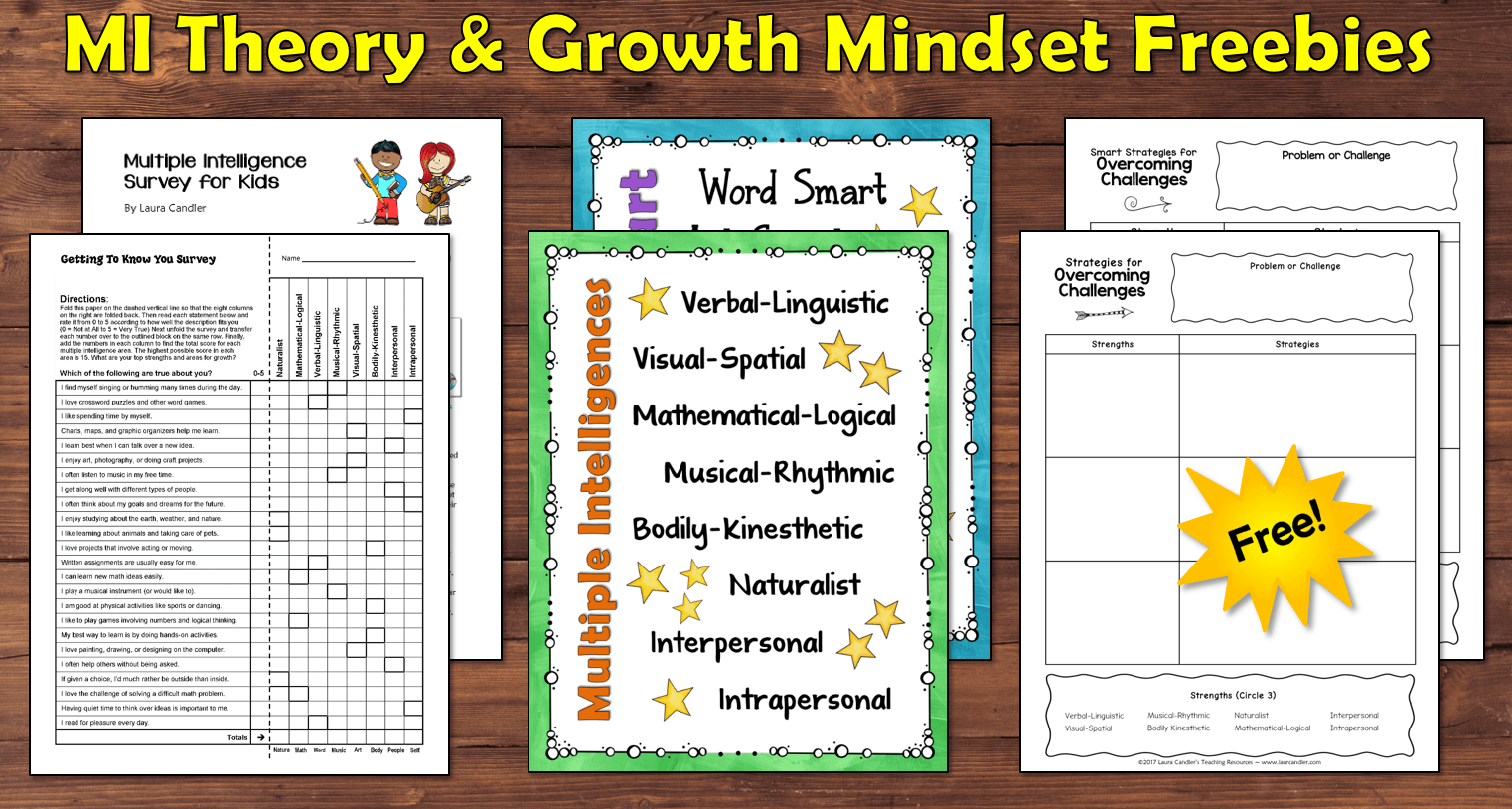
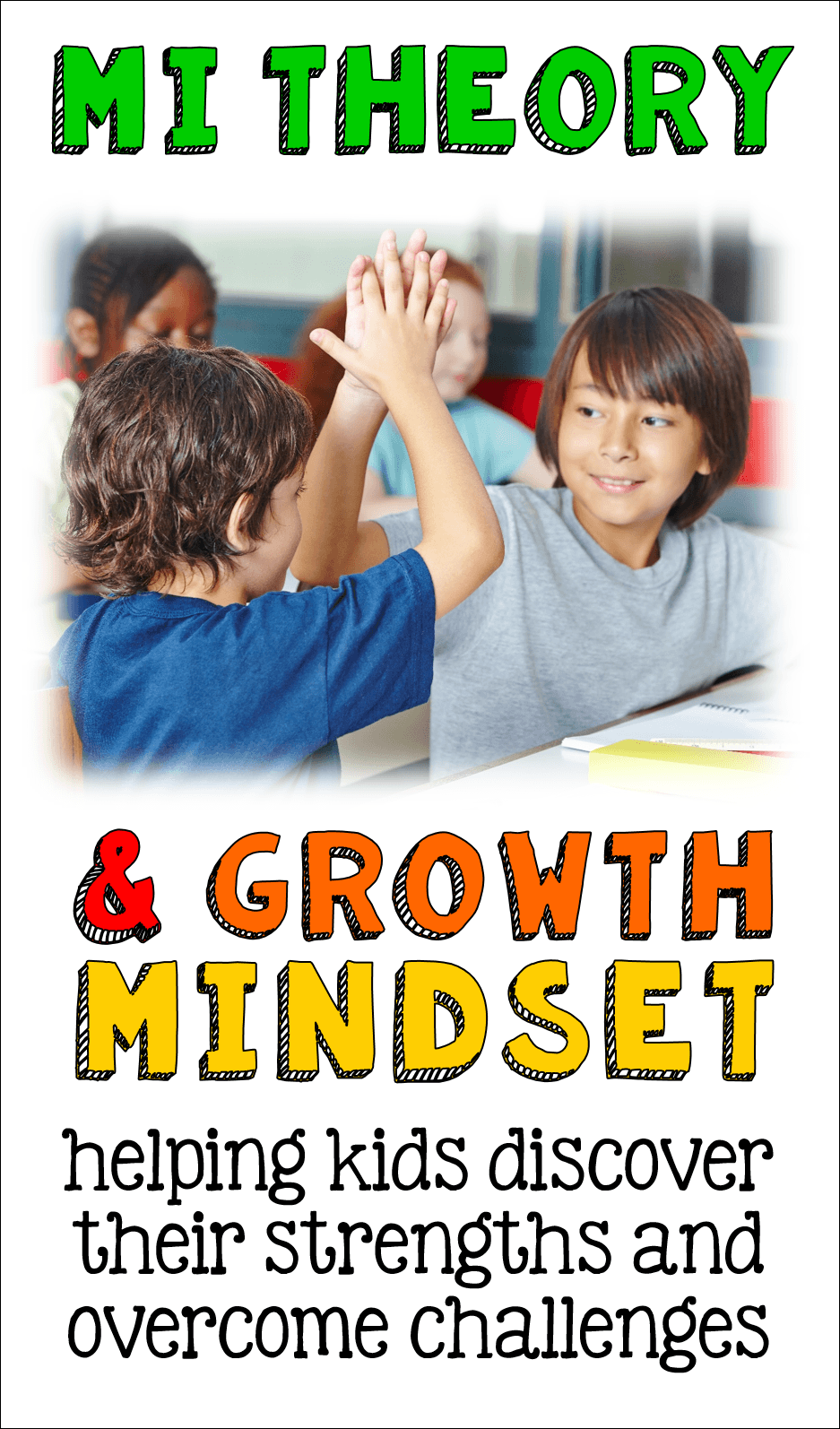
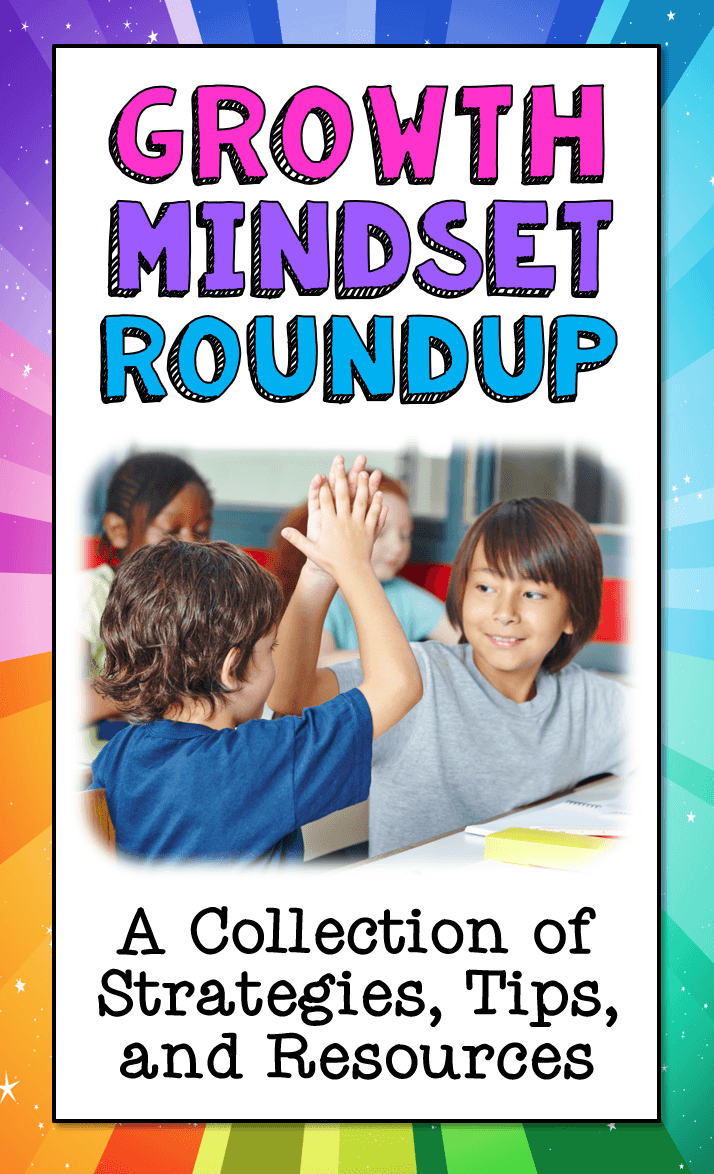
Multiple Intelligence Theory
Psychologist Dr. Howard Gardner proposed multiple intelligence theory over 40 years ago in response to the prevailing belief that intelligence was a one-dimensional trait, and that a persons’ IQ was fixed at birth. Dr. Gardner disagreed with this limiting view of intelligence and suggested a multi-dimensional approach. According to Dr. Gardner, “Human cognitive competence is better described in terms of a set of abilities, talents, or mental skills which we call ‘Intelligences.’ These multiple intelligences can be nurtured and strengthened, or ignored and weakened.”
MI theory was welcomed by most educators, especially those who recognized that children learn in different ways and that there that there are many paths to understanding. These teachers had already noticed that children learn best when they engage in activities that take advantage of their strengths, and MI theory made it possible to identify those strengths more easily.

Dr. Gardner identified at least eight types of intelligence, labeling with terms like visual-spatial, musical-rhythmic, mathematical-logical, and verbal-linguistic. Because this terminology was confusing for elementary students, some educators adopted the kid-friendly “smart” labels shown on the free MI theory posters below. I’ll tell you where to find these freebie in just a moment. 🙂
The Impact of Mindset on Success
More recently, Dr. Carol Dweck contributed to this field with her research on the connections between mindset and success. In a nutshell, Dr. Dweck observed that most people respond in one of two ways when facing challenges. Those who display a “growth mindset” enjoy solving problems and trying new experiences, and they choose challenging tasks over easy ones. They don’t view mistakes as failures, but rather as opportunities to learn and grow. On the other hand, people with a “fixed mindset” choose easy tasks over challenging ones, and they don’t enjoy taking risks or attempting to do something they’ve never done before. They view mistakes as failures to be avoided at all costs, and they are easily frustrated when they encounter difficulties. As you might expect, people who approach life with a growth mindset are more successful and happier than those with fixed mindsets.
Fortunately, Dr. Dweck’s research shows that a person’s mindset consists of learned behaviors that can be changed. People who have a fixed mindset can develop a growth mindset if they are willing to change the way they think about themselves and about their capacity to learn.
The Problem with the Word “Smart”
Obviously, we want to foster growth mindsets in our students, which means adopting practices that encourage positive, growth-oriented thinking. Dr. Dweck discovered that some types of praise are harmful and can lead to a fixed mindset, so it’s important to use praise effectively. As it turns out, praising children for being smart may cause them to avoid tasks that include a risk of failure because they are afraid of making mistakes.
Dr. Dweck’s findings resulted in an unfortunate backlash against MI theory. Some educators expressed concern about using the kid-friendly “smart” terms that refer to the multiple intelligences as the “8 Kinds of Smart.” Surely the practice of teaching kids about all the ways people are smart will lead to our students developing fixed mindsets, right?
Personally, I don’t see this happening if we’re careful about how we use the word “smart.” There’s a difference between praising kids for being smart and teaching children that people are smart in many ways. Furthermore, the use of the word “smart” should not be a reason to discount MI theory; Dr. Gardner never even used the word “smart” when referring to the multiple intelligences! Those kid-friendly terms were adopted by teachers to simplify the concepts for their students! If teachers aren’t comfortable using the word “smart,” they can easily replace it with one of the other words Dr. Gardner used to describe these intelligences such as, “skills, talents, or abilities.”
Why We Need to Teach MI Theory and Growth Mindset
Learning about growth mindset is important because it helps children understand that our brains can become smarter if we are willing to work hard, try new experiences, and accept challenges. Learning about multiple intelligence theory is important because it empowers students with the knowledge that there are many ways we are smart. Furthermore, by helping students identify their strengths, MI theory gives them the tools to they need to overcome challenges and develop a growth mindset.
Teaching Kids to Use Their Strengths to Overcome Challenges
When you’re ready to introduce MI theory and Growth Mindset to your students, use this lesson sequence as a guide to help you get started. If you’d like to use the resources I described in the lesson, subscribe to my email list and you’ll find all three of them on the freebies page described in the welcome email.
- Start by administering the kid-friendly “Getting to Know You” multiple intelligence survey, but don’t score it immediately or discuss the results with your students. Before you use the survey, please watch How to Use a Multiple Intelligence Survey to Foster a Growth Mindset. In this video, I explained how to administer the survey, how to score it, and how to discuss the results with your students from a growth mindset perspective.
- Discuss the characteristics of a fixed mindset versus a growth mindset with your students. Draw a T-chart with the words “Fixed Mindset” and “Growth Mindset” above the two columns. Under each column, list several belief statements that represent each type of mindset, and discuss these beliefs with your students.
- Introduce the basics of multiple intelligence theory using Dr. Gardner’s original terminology or the kid-friendly terms. You can use the MI theory posters included with the free resources that go with this blog post.
- Return the Getting to Know You MI Theory Survey to your students and show them how to score it. Discuss the survey results from a growth mindset perspective. Remind students that the results are only based on their answers to a few statements and they’re not permanent. This survey only provides a snapshot of their current strengths and growth areas. Avoid praising students for being “smart” in any of the multiple intelligence areas. Ask students to keep a copy of their survey results in a safe place such as a student portfolio or 3-ring binder.
- Teach students how to rely on their strengths to overcome challenges and problems. Growth mindset has been criticized for setting kids up for failure by teaching them that you can succeed at anything if you’re willing to try hard and never give up. I understand this concern, and I agree that trying harder won’t help a child who lacks the skills needed to accomplish a task and who has no idea where to turn for help.
That’s why it’s important to teach students what to do when they get stuck. One method is to teach them how to brainstorm strategies for overcoming challenges that are based on their MI survey results. The graphic organizer below titled Overcoming Challenges can be used to guide your students through this process. There are two variations of the graphic organizer included in the free resources for this lesson; chose the one that best meets the needs of your students.
To get started, display a copy of the graphic organizer where everyone can see it. At the top of the page, write one challenge or difficulty that many of your students face, for example, “Learning multiplication facts quickly and accurately.” Next, circle one of the multiple intelligences listed at the bottom of the page (for example, “Visual-Spatial)”) and write that term in the upper left corner of the chart under “Strengths.”
Then discuss how someone who learns in a visual-spatial manner could use that strength to learn the multiplication facts. List those strategies next in the top row under the “Strategies” heading. For example, one strategy would be to draw arrays for the multiplication facts the student is having trouble learning. Another strategy would be to draw intersecting horizontal and vertical lines for the factors and to count the intersections.
After you’ve guided your students through this process several times, they may be able to complete the graphic organizer on their own or with a partner when facing a challenge.
MI Theory and Growth Mindset Together
Do you see why it’s important to implement MI theory and Growth Mindset together? These two frameworks will empower your students and will give them tools to take ownership of their learning. With encouragement and support, your students will begin to believe in themselves and succeed in situations where they might have given up in the past.
I also believe that it’s important to have a full understanding of both concepts to implement them effectively in the classroom. If you’d like to learn more, check out my MI Theory and Mindset Bundle. This resource includes my MI Theory, Mindset, and Motivation professional development webinar and Multiple Intelligence Theory for Kids, a collection of lessons, activities, and printables. You can preview both items and purchase them separately or together in this bundle.
I hope you found these insights, resources, and strategies for implementing MI theory and Growth Mindset to be helpful.
My blog post is just one of over a dozen articles in the Growth Mindset Roundup blog hop. Be sure to click on the links below to check out the other articles from some of your favorite teacher bloggers!

